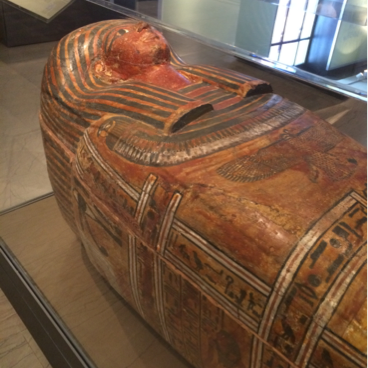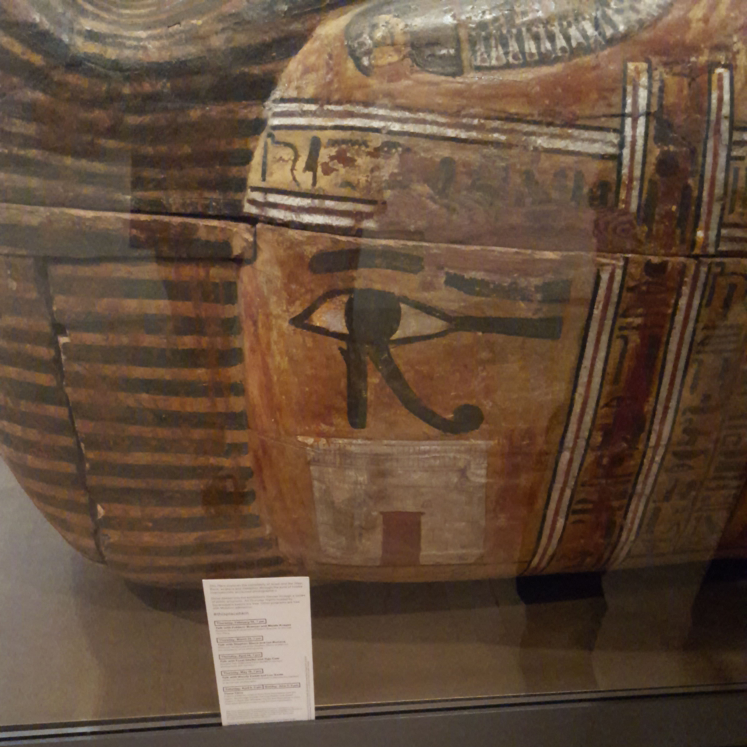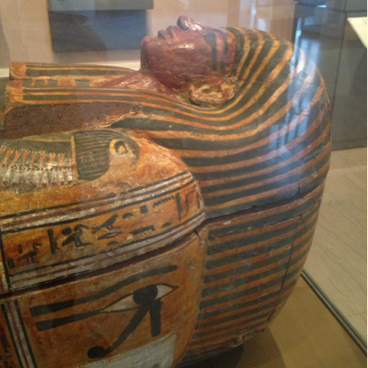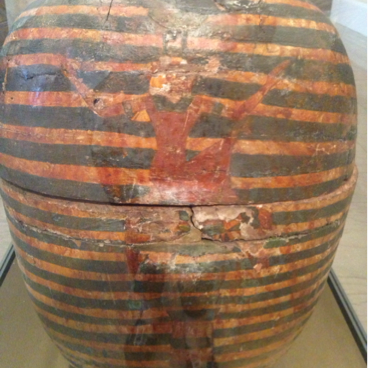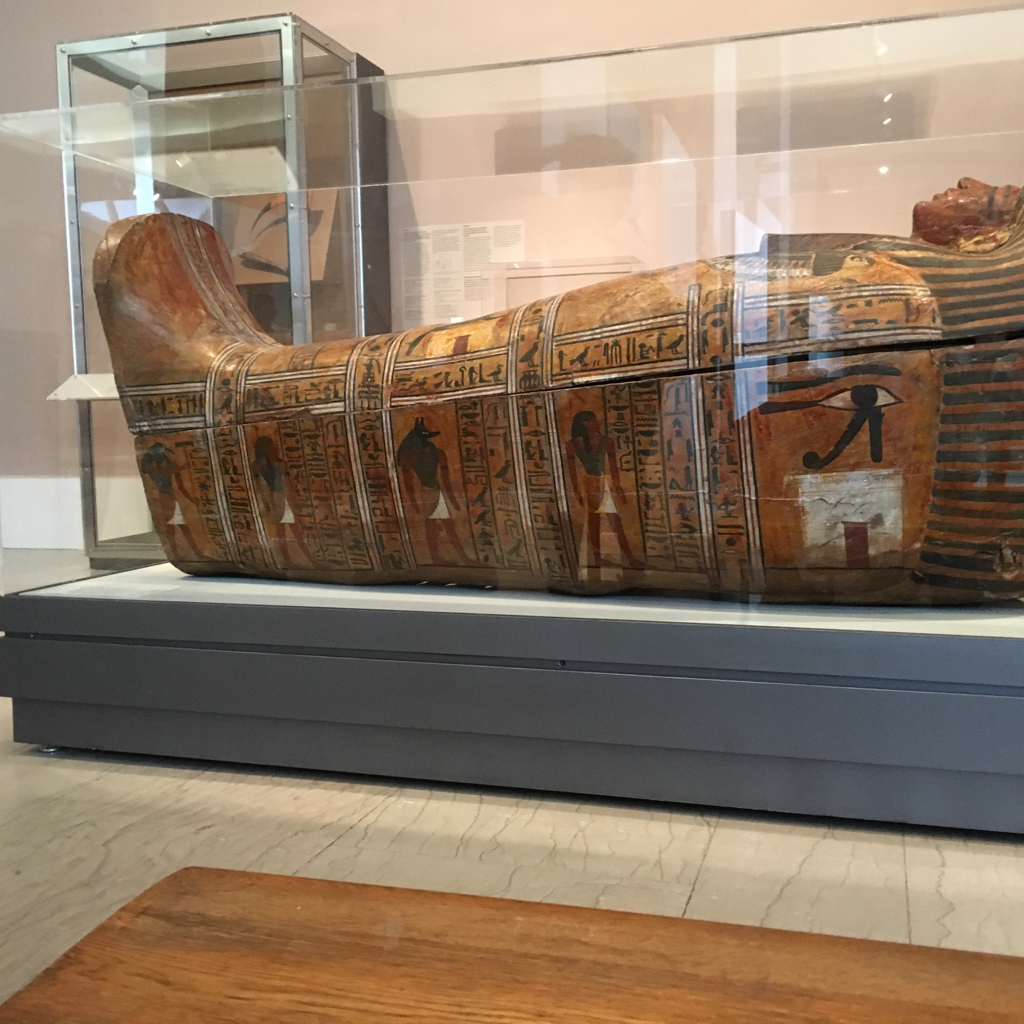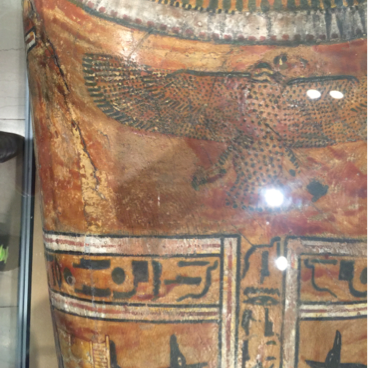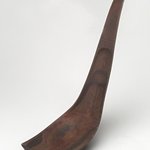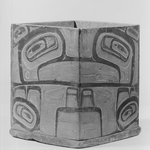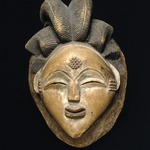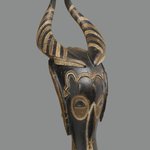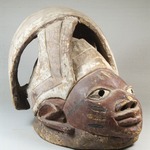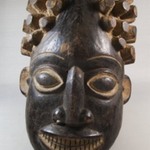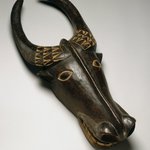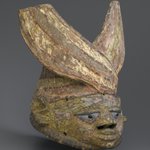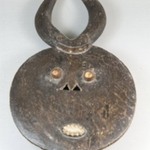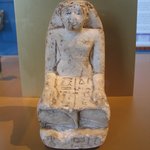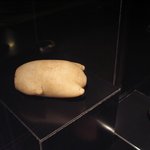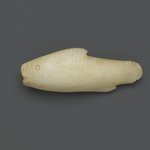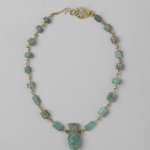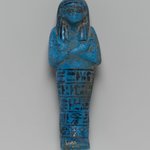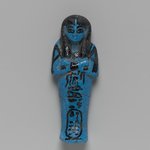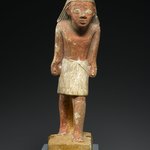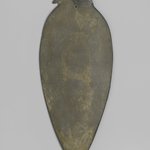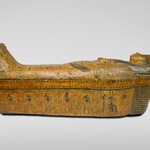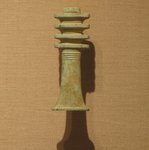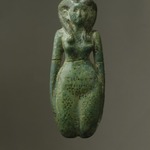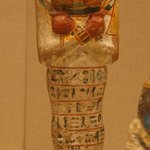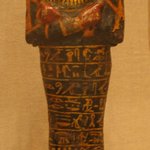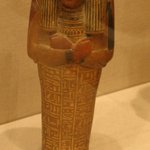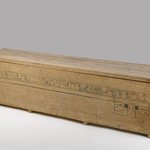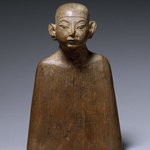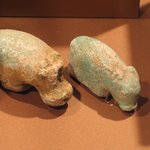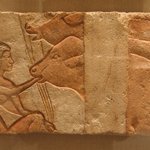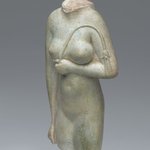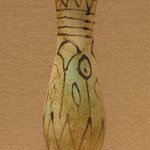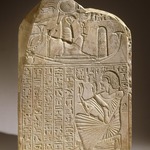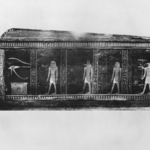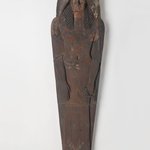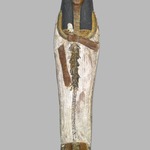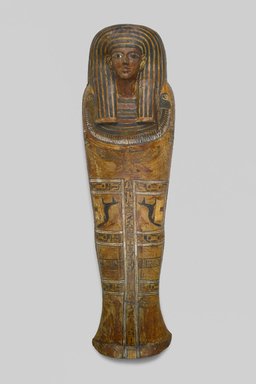

Anthropoid Coffin of the Servant of the Great Place, Teti, ca. 1339–1307 B.C.E. Wood, pigment, Box with lid in place: 33 7/16 x 26 3/16 x 83 1/2 in., 248 lb. (85 x 66.5 x 212.1 cm, 112.5kg). Brooklyn Museum, Charles Edwin Wilbour Fund, 37.14Ea-b. Creative Commons-BY (Photo: Brooklyn Museum, 37.14E_front_PS1.jpg)

Anthropoid Coffin of the Servant of the Great Place, Teti, ca. 1339–1307 B.C.E. Wood, pigment, Box with lid in place: 33 7/16 x 26 3/16 x 83 1/2 in., 248 lb. (85 x 66.5 x 212.1 cm, 112.5kg). Brooklyn Museum, Charles Edwin Wilbour Fund, 37.14Ea-b. Creative Commons-BY (Photo: Brooklyn Museum, 37.14E_profile_PS1.jpg)

Anthropoid Coffin of the Servant of the Great Place, Teti, ca. 1339–1307 B.C.E. Wood, pigment, Box with lid in place: 33 7/16 x 26 3/16 x 83 1/2 in., 248 lb. (85 x 66.5 x 212.1 cm, 112.5kg). Brooklyn Museum, Charles Edwin Wilbour Fund, 37.14Ea-b. Creative Commons-BY (Photo: Brooklyn Museum, 37.14E_detail_PS1.jpg)
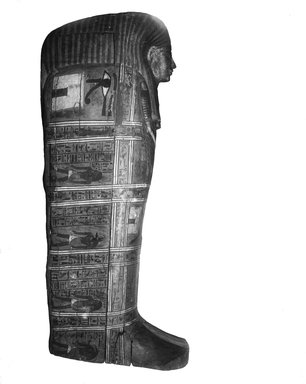
Anthropoid Coffin of the Servant of the Great Place, Teti, ca. 1339–1307 B.C.E. Wood, pigment, Box with lid in place: 33 7/16 x 26 3/16 x 83 1/2 in., 248 lb. (85 x 66.5 x 212.1 cm, 112.5kg). Brooklyn Museum, Charles Edwin Wilbour Fund, 37.14Ea-b. Creative Commons-BY (Photo: Brooklyn Museum, 37.14Ea-b_NegD_glass_bw_SL4.jpg)
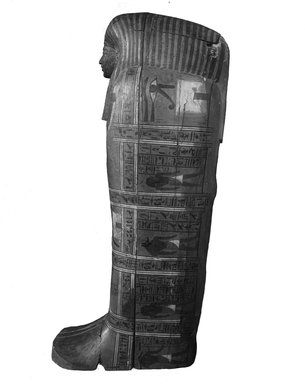
Anthropoid Coffin of the Servant of the Great Place, Teti, ca. 1339–1307 B.C.E. Wood, pigment, Box with lid in place: 33 7/16 x 26 3/16 x 83 1/2 in., 248 lb. (85 x 66.5 x 212.1 cm, 112.5kg). Brooklyn Museum, Charles Edwin Wilbour Fund, 37.14Ea-b. Creative Commons-BY (Photo: Brooklyn Museum, 37.14Ea-b_NegE_glass_bw_SL4_.jpg)

Anthropoid Coffin of the Servant of the Great Place, Teti, ca. 1339–1307 B.C.E. Wood, pigment, Box with lid in place: 33 7/16 x 26 3/16 x 83 1/2 in., 248 lb. (85 x 66.5 x 212.1 cm, 112.5kg). Brooklyn Museum, Charles Edwin Wilbour Fund, 37.14Ea-b. Creative Commons-BY (Photo: Brooklyn Museum, 37.14Ea-b_NegF_glass_bw_SL4.jpg)
Anthropoid Coffin of the Servant of the Great Place, Teti
Egyptian, Classical, Ancient Near Eastern Art
On View: Funerary Gallery 1, Martha A. and Robert S. Rubin Gallery, 3rd Floor
The Brooklyn Museum is commemorating its 200th anniversary by spotlighting 200 standout objects in its encyclopedic collection.
A coffin was the most important part of ancient Egyptians’ funerary equipment. This is one of the earliest preserved examples of a yellow painted coffin. It would have been commissioned by the deceased, a man named Teti, or his family.
Teti was an artist in Deir el-Medina, a vibrant community of scribes, artisans, workers, and their families (not unlike Brooklyn!). Teti was not particularly wealthy, and his coffin was painted yellow to imitate gold gilding on more expensive examples.
Despite his economic status, Teti had knowledge of his peers’ artistic innovations and of elite religious texts due to his trade and residence. Inscribed on the coffin’s sides is Spell 151 from the Book of the Dead. Also pictured are a variety of Egyptian deities speaking words to protect Teti’s body. The white buildings painted on the sides and top represent the embalming tent where mummification occurred. The inscription running down the front of the coffin is dedicated to the goddess Nut.
Teti would have been buried in the hills above Deir el-Medina, in an area called s.t-mAat or “the place of truth.” His family would have visited his tomb to leave offerings and ask for his blessing.
***
Gallery Label
Among the greatest desires of Egyptians during the New Kingdom period was a proper burial. This coffin was made for the artisan Teti, a "Servant of the Great Palace," who painted tombs in the Valley of the Kings He paid nearly a year's salary for or such quality, with five colors used for the decoration—blue, yellow, red, black, and white. The yellow background with red streaks mimics the gilded coffins of the wealthy
- Possible place made: Thebes (Deir el-Medina), Egypt
- Reportedly from: Thebes (vicinity), Egypt




